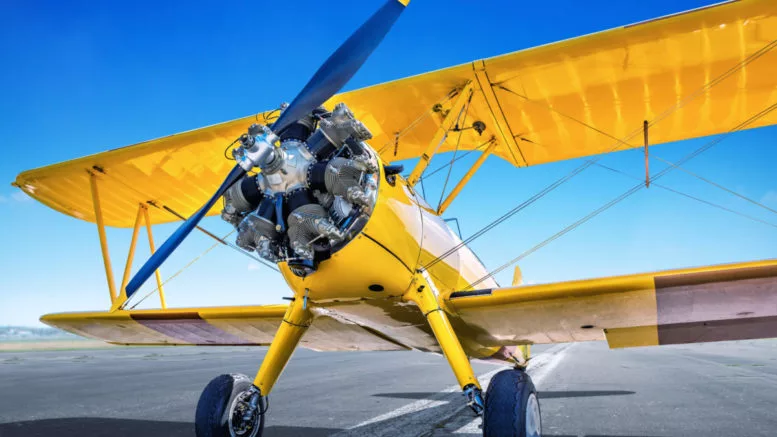Before the Wright Brothers invented the airplane and humans could travel by air, we often looked up at the birds flying and observed how they spread their wings and soared. From watching birds in flight, we noticed one thing – to pass, we need wings. And unlike Icarus, we couldn’t just create massive wings and attach them to ourselves. We had to build winged machines to help us fly. And make we did – we built aircraft with excellent airplane wing design with attachments to help us pass.
Airplane Wing Design and Flight
If you have wondered how the wings help an airplane fly, you’ll have your answer today. There’s an interesting theory in Physics called the Bernoulli Principle. The principle states that the faster air (or any fluid) moves through space, the lower the air pressure, and the slower it moves, the higher the air pressure. Airplane wings are designed to exploit this principle. The undersides of the wings are usually flat while the tops are curved; wings are also designed to slant slightly downwards from front to back.
This means air traveling around a branch has a long way to move, so the air travels faster over the top. These unequal air speeds mean unequal air pressure acting on either side of the wings – much more air pressure is being exerted underneath the wings than over the top. It is this pressure differential that generates lift. The faster the wings move through the air, the greater this lift becomes until it eventually overcomes the force of gravity, keeping the plane on the ground.
Different Parts of Airplane Wing Design
Ailerons
An aileron (French for ‘little wing’) is a primary flight control surface located on the outside trailing edge of each wing. The two ailerons (one on each branch) control the movement of the airplane about its longitudinal axis. Ailerons move in opposite directions to tilt the lift vector and cause a turn in the desired direction.
Flaps
Flaps are high-lift devices located on the trailing edge of each wing to help the airplane create more lift. They are usually deployed (especially during landing) to help increase or maintain lift at a much slower speed.
Winglets
Most airplanes have wing tips bent up, called a winglet. Air vortices are produced on the wingtips due to the pressure differential between the wing’s top and bottom surfaces. These vortices induce drag – a force that opposes the plane’s motion through the air, thus slowing it down. Winglets are designed to disrupt these vortices of air and reduce drag.
Slats
Slats are like flaps, only that they are located on the wing’s leading edge and temporarily alter its shape to create more lift. Their primary use increases charge when moving at slower speeds, like during takeoff, approach, or landing.
Spoilers
Spoilers, as their name implies, spoil the lift produced by the wings. They are panels mounted on the wing’s upper surface, which increase drag and decrease the charge by disrupting the airflow over the wing. They are used for descending and losing altitude without gaining airspeed.
The Perfect Airplane Wing Design
The Wright Brothers’ revolutionary aircraft had twin wings made from wooden and fabric materials. The wings had a somewhat boxy and rectangular shape. However, the design of airplane wings has evolved from that simplistic design. Airplane wings now come in various shapes and designs – rectangular, elliptical, tapered, trapezoid, etc.
The perfect wing shape depends on what type of performance you are looking for. Wings are designed to optimize the airplane’s flight performance; thus, the design depends on many other factors, like the airplane’s type and intended purpose. However, we would briefly examine different airplane wing designs used in contemporary times.
Rectangular Wings
This is the easiest airplane wing design, mainly seen on small and light airplanes. The wings are straight, non-tapered, and perpendicular to the airplane’s fuselage. They are not used because they aren’t very aerodynamically efficient.
Elliptical Wings
This wing is the most aerodynamically efficient wing shape. The elliptical spanwise lift distribution reduces drag to the minimum. It was famously used on the British fighter aircraft – the Supermarine Spitfire. It is, however, not being implemented on modern airplanes despite its stated advantages due to poor manufacturability.
Tapered Wings
This is a modification of the rectangular wing to get similar aerodynamics to the elliptical wing shape. Tapered wings have smaller wingtips, reducing the induced drag as there is less room for air vortices than the rectangular wing type. While this isn’t as efficient as the standard elliptical wing, it strikes a balance between efficiency and manufacturability.
Swept Back Wings
As the name states, these are wings whose leading edges are swept back. These swept-back wings reduce drag when flying at transonic speeds. These are the wings on most modern high-speed commercial airplanes like the Boeing 787 Dreamliner.
Trapezoidal Wing
In this configuration, the wing’s leading edge is swept back while the trailing edge tilts forward. This design offers outstanding supersonic flight efficiency and has good stealth characteristics. This combination of stealth and speed makes it a popular choice for US military aircraft, most notably the F-22 Raptor jet. The major drawback of this wing design is that wing loading is high, reducing maneuverability.
The Significance of Airplane Wing Design
Designing and crafting the perfect fit for an airplane is no mean feat. Airplane wings are a sophisticated and highly complex piece of engineering. So when you next get on a plane or at an air show, look at the wings and see how important they are. Take a moment to appreciate that sight. So much sophistication goes into the design, making it easy to enjoy. Also, you are looking at what man has long longed for – Wings with which to fly.
Ready to Soar with Us?

